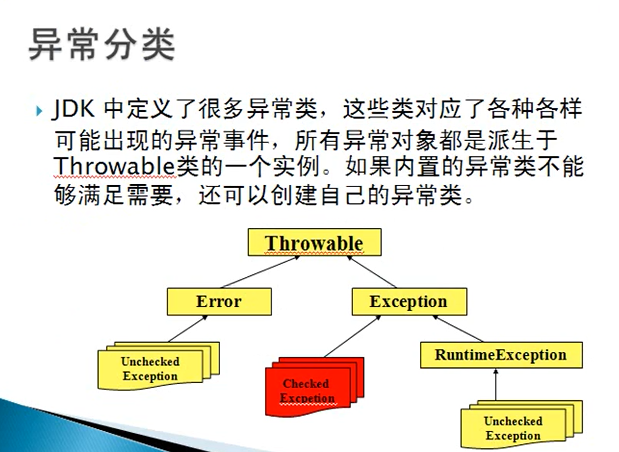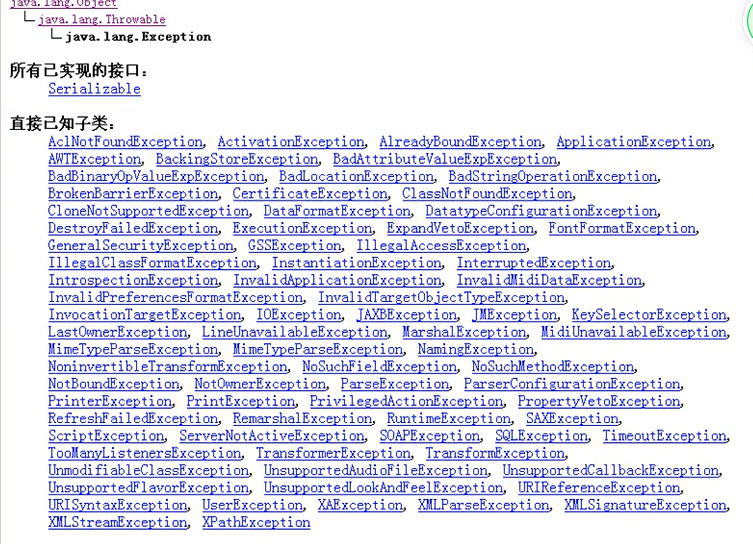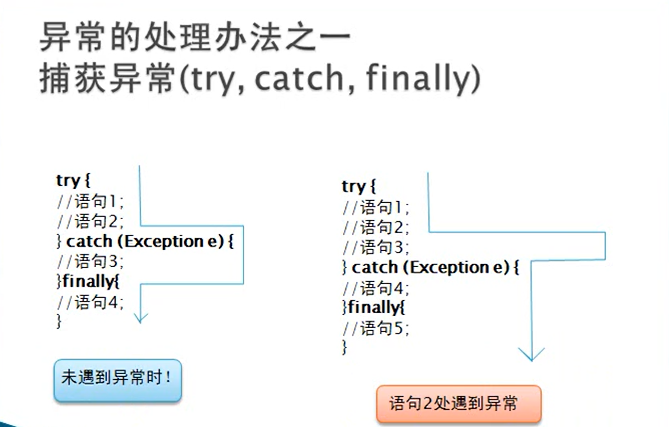异常机制(Exception)(一)
异常机制


Exception直接子类

空指针异常(NullPointerException)
练习
package cn.Exception; public class Test01 { public static void main(String[] args) { computer c=null; //空指针异常,对象是null,调用了对象的方法和属性。 if(c!=null) { c.start(); } } } class computer{ void start() { System.out.println("启动"); } }
try-catch-finally

典型示例
package cn.Exception; import java.io.FileNotFoundException; import java.io.FileReader; import java.io.IOException; public class Test02 { public static void main(String[] args) { FileReader f=null; //d try { f=new FileReader("C:/Users/Administrator/Desktop/sun/a.txt"); //要抛FileNotFoundException异常//FileReader 用来读取字符文件的便捷类 char c=(char)f.read(); //要抛IOException异常 char c2=(char)f.read(); System.out.println(""+c+c2); //添加上“”,代表字符串相连 }catch(FileNotFoundException e) { //FileNotFoundException是IOException的子类,一般情况下子类放在前面,如果放后面,就会报父类已经处理的错误 e.printStackTrace(); } catch( IOException e){ e.printStackTrace(); } finally { try { if(f!=null) //如果f是空的就不执行了,f不是空的,执行关闭代码。 { f.close(); //抛异常 } } catch(Exception e) { e.printStackTrace(); } } } }
执行顺序

最后执行return,finally里有return,则会将前面的返回值覆盖,因此不建议在finally里建立返回值。




